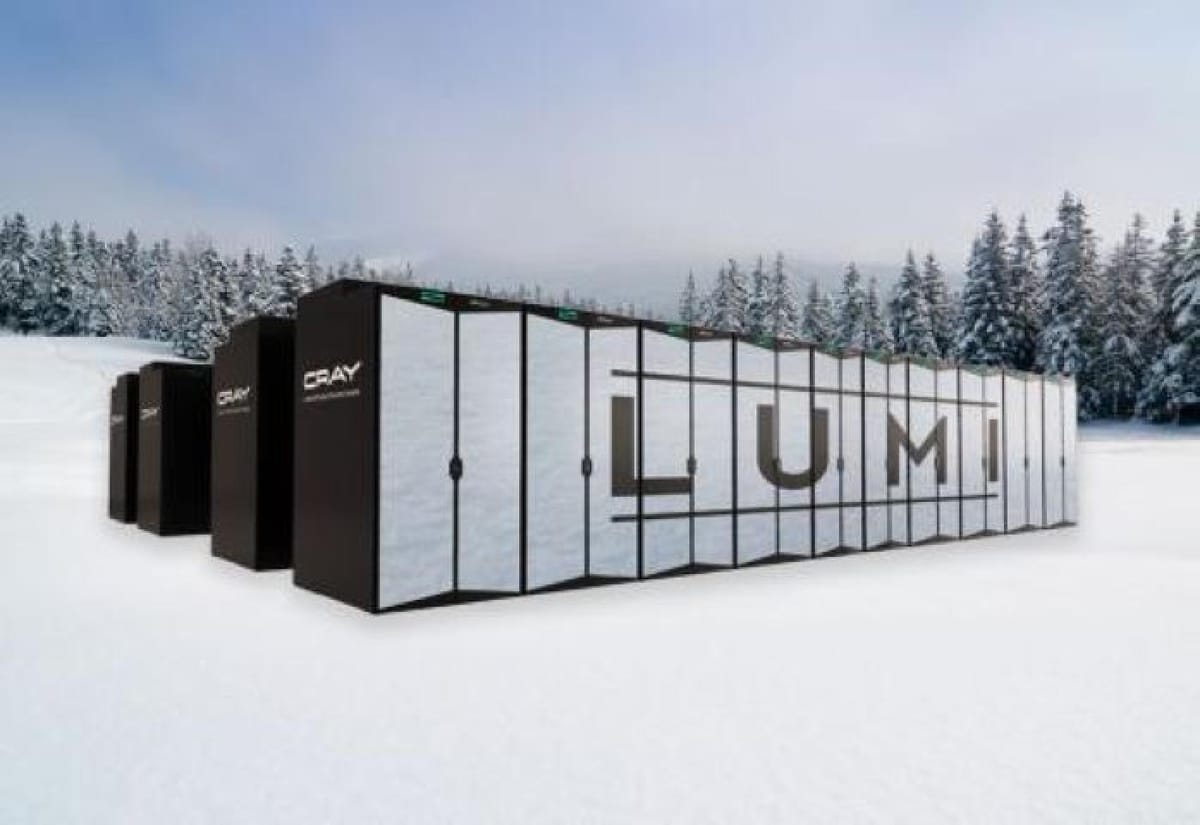Finland's LUMI is Europe's green supercomputer

On 13 June, the European High-Performance Computing Joint Undertaking (EuroHPC JU) inaugurated its latest supercomputer, Large Unified Modern Infrastructure (LUMI), located in Kajaani, Finland. With a peak speed of more than 550 petaflops per second, it is the third-fastest supercomputer in the world and the fastest in Europe.
Consortium
The EuroHPC JU aims to make Europe a world leader in supercomputing by coordinating activities and resources between the European Union (EU) and the EuroHPC JU participating countries. While doing so, the EuroHPC JU constructs a high-performance computing (HPC) research infrastructure that will boost HPC expertise and aid in advancing technologies. LUMI is part of this project and is coordinated by a big consortium of ten European nations— Finland, Belgium, Denmark, Norway, Sweden, Poland, the Czech Republic, Estonia, Iceland, and Switzerland.
Although owned by the EuroHPC JU, LUMI is a joint initiative between the EU, European countries, and private partners. The EuroHPC JU owns half of the LUMI resources, and the other half is the property of the member nations. Based on their commitment to the LUMI funds, each consortium country has a portion of the resources, which they distribute by following their policies and considerations. The total budget of the EuroHPC JU pre-exascale system in CSC’s data center is over 202 million Euros, half of which is funded by the EU and the other half from the consortium countries. The life span of LUMI is 2021–2026.
Features
Supercomputers consume a large amount of energy that contributes significantly to CO2 emissions, but LUMI runs with 100% hydropower, and the waste heat produced by its operations is on track to meet 20% of Kajanni's yearly district heating demand. This makes LUMI the greenest supercomputer in Europe and the 3rd greenest in the world.
LUMI has a combined performance of 1.5 million of the latest laptop models, with a capability of executing more than 375 million billion calculations per second. This opens an opportunity to carry out large-scale, intricate computational tasks that demand incredibly accurate modeling and processing in a shorter period. Physically, LUMI occupies a space of about 300 square meters and is around 150,000 kg.
LUMI can fight climate change
Supercomputers play a vital role in the application of data- and computation-intensive sectors, such as medical, healthcare, energy, climate research, and cybersecurity that require enormous computing capacity. LUMI's applications can be useful for data-intensive research, high-performance computing, and AI that facilitates advancements towards environmental sustainability. The supercomputer sets the groundwork for the green transition by supporting the greening and cost-cutting of the European ICT sector, which is essential for achieving the ambitious climate targets set by the EU. It’s enormous computing power will help make scientific advances in climate research considerably quickly.
The plan is that LUMI enables scientists to build a 'digital twin' of the earth to understand the impact of human activity on climate change. According to Pekka Manninen, the director of the LUMI Leadership Computing Facility at the CSC, the EU has launched the Destination Earth project to build a numerical simulation to understand how climate adapts to human actions. The project is part of the European Green Deal and European Digital Strategy, funded by the EU's Digital Europe Programme, and aims to create a highly detailed model of the earth.
This computed climate model can be used to understand how cities are changing, whether wildlife is accelerating or slowing down, or how glaciers operate as climate change intensifies. The supercomputer will assist the scientists to analyze the climate in a very high resolution. This will help climate experts make better predictions about the effects of human activity.
Future of LUMI
The LUMI supercomputer is a significant accomplishment for Europe that will spur innovation in key industries, and additionally create economic growth for Europe. It will pave the path for the advancement of cutting-edge technologies like quantum computing and deep learning in artificial intelligence that can assist a great deal in meeting climate targets.
LUMI's strong consortium collaboration is a ground-breaking initiative to boost European competitiveness and digital sovereignty. The project fosters international research collaborations, which will deal with various societal challenges. It promotes employment, and long-term economic growth through research, development, and innovation activities, which will boost Europe's scientific excellence and industrial strength and supports the digital transformation of its economy.
LUMI received an international award in 2021 for the finest sustainable development innovation in the field of high-performance computing. The supercomputer will start the second pilot phase for selected users in August 2022. After successful completion, it is expected to be available for users in September 2022.
Summary
- The newly inaugurated Large Unified Modern Infrastructure (LUMI) is located in Kajaani, Finland
- LUMI is capable of executing more than 375 million billion calculations per second
- LUMI is the greenest supercomputer in Europe



